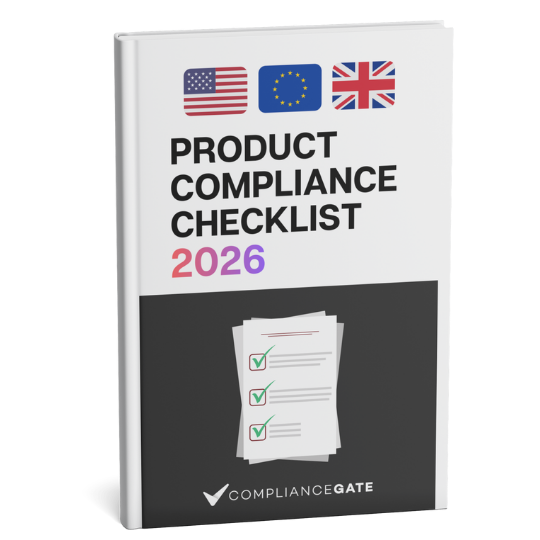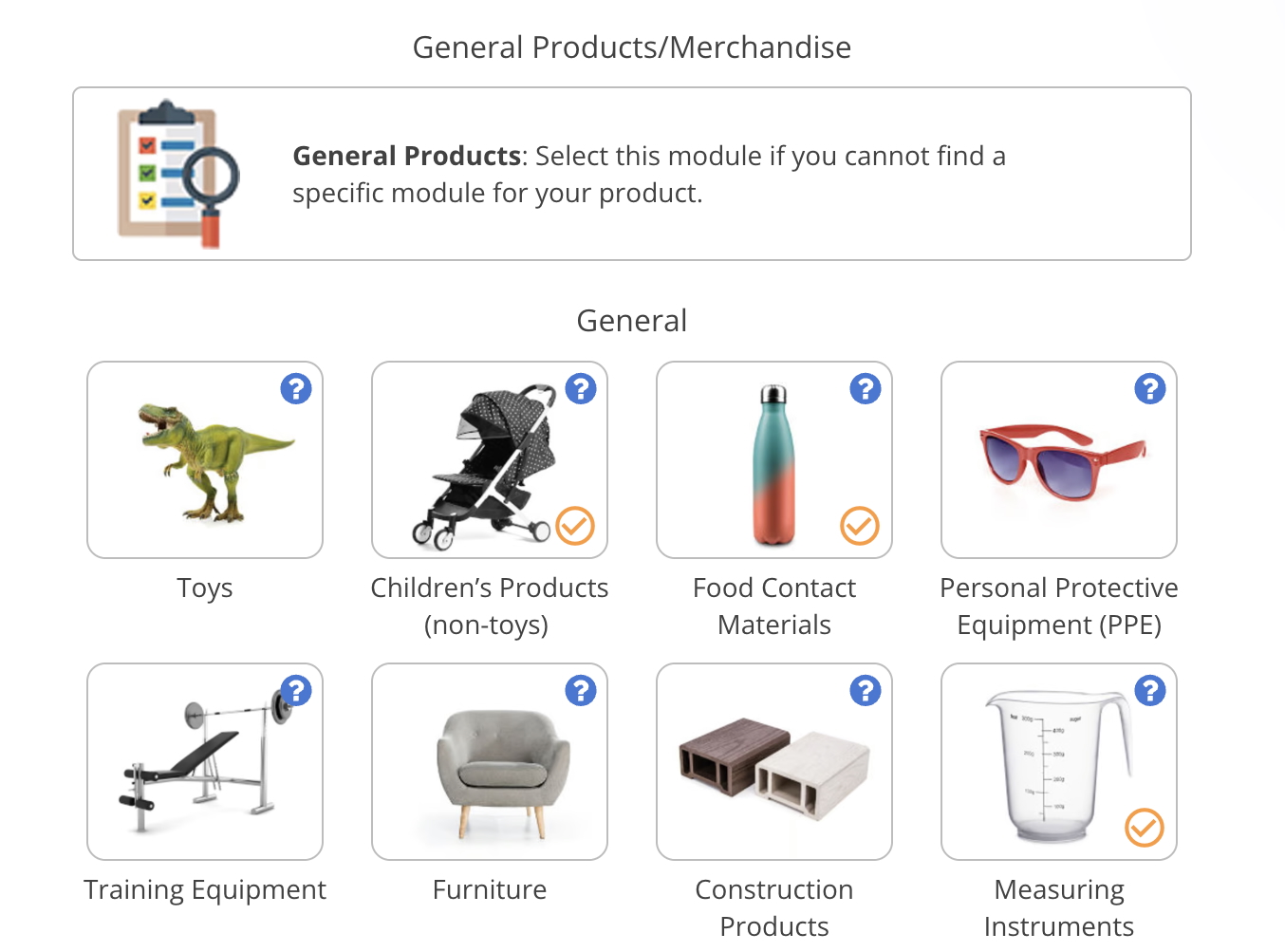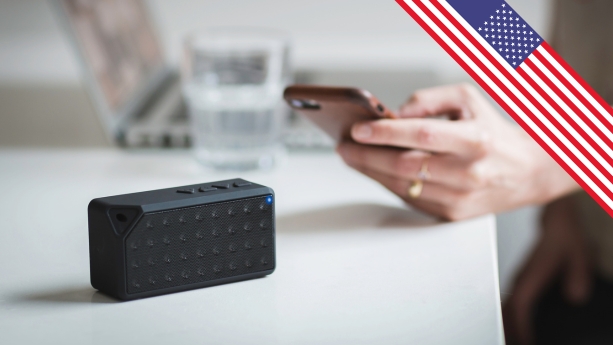
Planning to import or manufacture electronics for the US market? In this guide, we list both mandatory and voluntary labeling requirements and markings for electronic and electrical products in the United States.
Content Overview

FREE CONSULTATION CALL (30 MIN)
 Ask questions about compliance requirements
Ask questions about compliance requirements Countries/markets:
Countries/markets:
 Learn how we can help your business
Learn how we can help your business
You will speak with:Ivan Malloci or John Vinod Khiatani
SDoC Compliance Information Statement
The Supplier’s Declaration of Conformity (SDoC) is an authorization procedure required for some types of electronics under 47 CFR Part 15.
The responsible party must provide a compliance information statement stating that the product complies with the rules of 47 CFR Part 15. It should contain the following information:
(1) Identification of the product, e.g., name and model number;
(2) A compliance statement as applicable, e.g., for devices subject to part 15 of this chapter as specified in § 15.19(a)(3) of this chapter, that the product complies with the rules; and
(3) The identification, by name, address and telephone number or Internet contact information, of the responsible party, as defined in § 2.909. The responsible party for Supplier’s Declaration of Conformity must be located within the United States.
However, if the final product is assembled from modular components that are already authorized – such as CPU boards, – it is subject to the SDoC authorization procedure itself and according to the FCC rules no additional testing is required, then the compliance information statement should contain the following information:
(1) Identification of the assembled product, e.g., name and model number.
(2) Identification of the modular components used in the assembly. A modular component authorized under Supplier’s Declaration of Conformity shall be identified as specified in paragraph (a)(1) of this section. A modular component authorized under a grant of certification shall be identified by name and model number (if applicable) along with the FCC Identifier number.
(3) A statement that the product complies with part 15 of this chapter.
(4) The identification, by name, address and telephone number or Internet contact information, of the responsible party who assembled the product from modular components, as defined in § 2.909. The responsible party for Supplier’s Declaration of Conformity must be located within the United States.
(5) Copies of the compliance information statements for each modular component used in the system that is authorized under Supplier’s Declaration of Conformity.
The SDoC Compliance Information Statement is required for most unintentional radiators, such as wired keyboards or electrical coffee pots without Bluetooth or other wireless functionalities.
It should be provided with every product, either in the user manual or on a separate sheet. In some cases, it can also be provided electronically.
FCC Device Label
The labeling requirements are different for unintentional and intentional radiators
Unintentional radiators
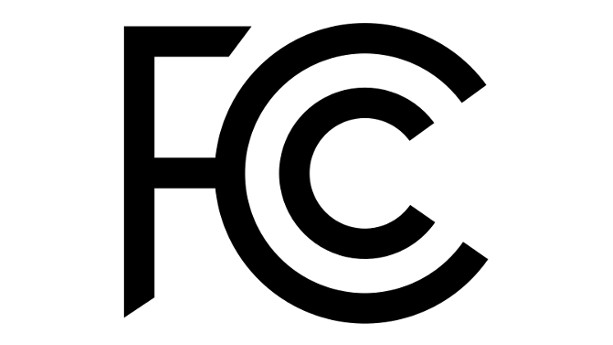
The FCC logo can be used to label products that are subject to the SDoC procedure and comply with all its requirements.
The logo is voluntary and can be featured in the product, instructions, and e-label. According to the FCC, even if you use the logo, you still need to provide information to uniquely identify the product, and a compliance information statement.
Intentional radiators
If your product is classified as an intentional radiator, for example, because it is Wi-fi enabled, then it must be authorized via the certification procedure. In this case, you must affix an FCC ID to the product.
Assembled products
We noticed that some products, for examples some laptops, feature both the FCC logo and the FCC ID. Although we could not find a confirmation in the FCC website or 49 CFR Part 15, this could be because of the fact that some products are composed by:
a. Some components that are intentional radiators (such as a wi-fi module), for which FCC ID is needed, and
b. Other parts that are unintentional radiators, for which the FCC logo can be used.
Country of Origin
Country of origin marking is mandatory for essentially all consumer products sold in the United States. This also includes electronic and electrical products. The country of origin mark must generally indicate the country where the product was manufactured or where the most value was added.
Examples
- Made in China
- Made in USA
- Made in Vietnam
- Made in Mexico
For electronic products, this can sometimes be tricky to determine, as components from many different countries are assembled together. For example, electronics are commonly assembled in China or Vietnam, but can include parts from Korea, Japan, Germany, or the US (in addition to those that are made domestically).
Luckily, this situation is addressed to some extent in Part 134 – Country of origin marking:
(e) Assembled articles. Where an article is produced as a result of an assembly operation and the country of origin of such article is determined under this chapter to be the country in which the article was finally assembled, such article may be marked, as appropriate, in a manner such as the following:
(1) Assembled in (country of final assembly);
(2) Assembled in (country of final assembly) from components of (name of country or countries of origin of all components); or
(3) Made in, or product of, (country of final assembly).
CPSIA Tracking Label
The CPSIA sets tracking labeling requirements for all children’s products imported or manufactured for sale in the United States. More specifically, the following information must be present on the product and the packaging.
Required information
- Manufacturer or private labeler company name
- Production date (month and year)
- Production location (city, country)
- Batch number
- Any other information to identify the source (e.g., address of the manufacturing plant)
How is this relevant to electronic products?
For context, children’s products refer to products intended for children 12 years of age or younger, including but not limited to electronic products.
Here are some examples of covered products.
- Electronic toys
- Electrical hygiene products for children
- Other electronic children’s products
- Children’s products containing batteries
California Proposition 65 Warning
California Proposition 65 restricts chemicals in consumer products. Covered businesses generally have the option to either ensure that their products do not contain phthalates, lead, cadmium, and other restricted substances above the set limits. Or, affix a California Proposition 65 warning label.
Example wording
WARNING: This product can expose you to chemicals including [name of one or more chemicals], which is [are] known to the State of California to cause cancer, and [name of one or more chemicals], which is [are] known to the State of California to cause birth defects or other reproductive harm. For more information go to www.P65Warnings.ca.gov.
Warning symbol
The word “WARNING” must follow the warning symbol that consists of a “black exclamation point in a yellow equilateral triangle with a bold, black outline”, which can be downloaded on www.p65warnings.ca.gov.
How is this relevant to electronic products?
Plastic and metal casings can contain restricted substances above the set limits. Likewise, paints and coatings applied to material surfaces can also contain phthalates and other chemicals.
Other labeling requirements
This section contains other labeling requirements and markings that are generally voluntary in the United States.
UL Marking
Underwriter Laboratories (UL) is an organization that develops product standards for electronic and electrical products. UL standards, while often voluntary, are generally recognized in the United States.
UL also provides various certification and listing schemes that allow brands to use one of their UL symbols and marks to indicate compliance with applicable UL standards. However, doing so requires approval from UL.
Examples
- UL Mark
- UL Recognized Component Mark
You can learn more about UL marks and symbols in this guide.
ETL Marking
Intertek also operates its own US-focused electronics compliance scheme called ETL, which stands for Electrical Testing Laboratories. Products that have undergone testing and ETL certification can use the ETL Listed Mark.
Note that the ETL Listed Mark is owned by Intertek. As such, you cannot self-assess compliance and freely use the ETL symbol.
NRTL Mark
Some types of equipment and materials, as listed on the Occupational Safety and Health Administration’s website, require approval from a Nationally Recognized Testing Laboratory. This includes, for example, fixed extinguishing systems and employee alarm systems.
Once a product is certified, the manufacturer can apply a registered NRTL mark to the product. The mark, which indicates that the product complies with the relevant safety testing standards, varies according to the NRTL that certified the product.
You can learn more about the NRTL mark in this guide.
ENERGY STAR Symbol
The ENERGY STAR is a voluntary labeling program for energy-efficient products such as clothes washers and electronic cooking products.
You can only mark your label with the ENERGY STAR if your product complies with the energy efficiency requirements set by the EPA.
You can find more information in this guide.
Is CE marking accepted for electronics in the United States?
No, CE marking indicates compliance with applicable EU regulations and directives. While mandatory for electronics in the EU, CE marking is not an accepted compliance mark in the United States.

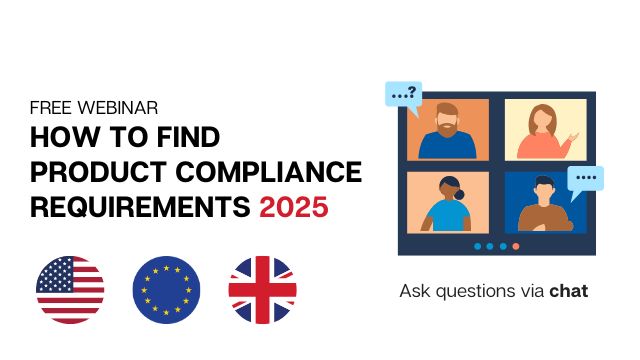





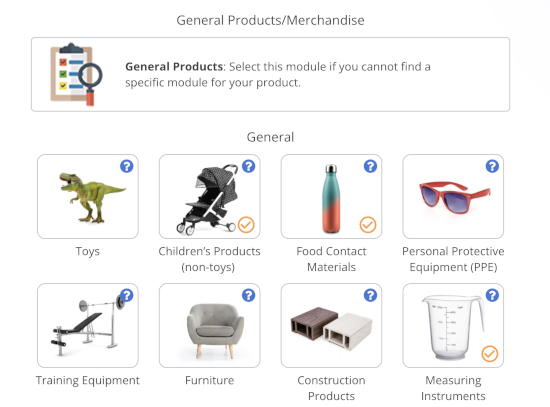






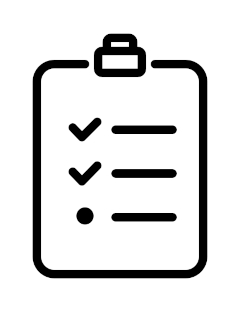

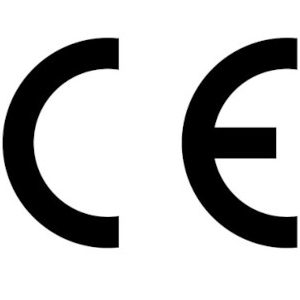




.png)
.png)
.png)
